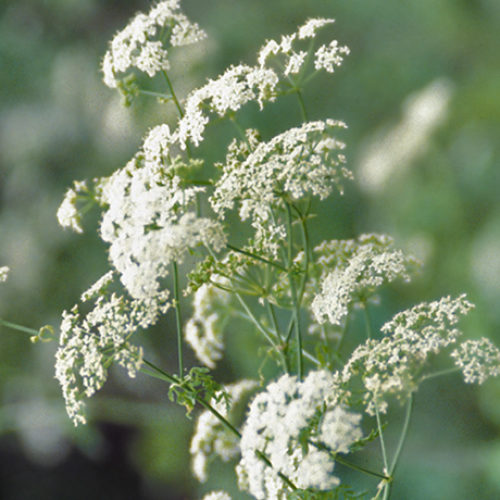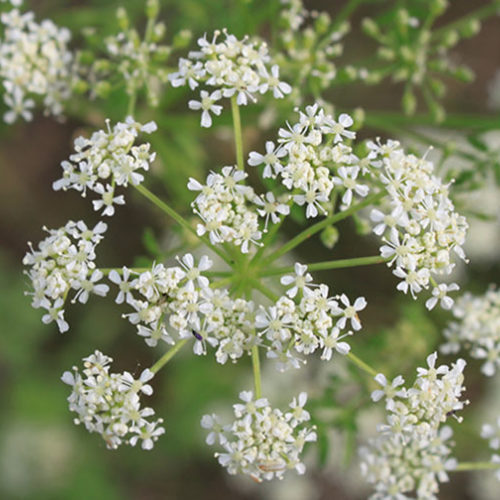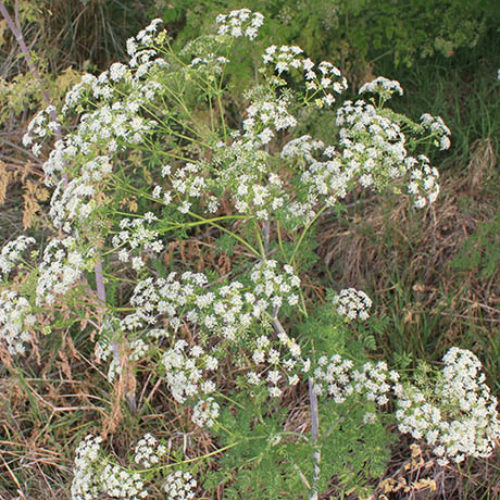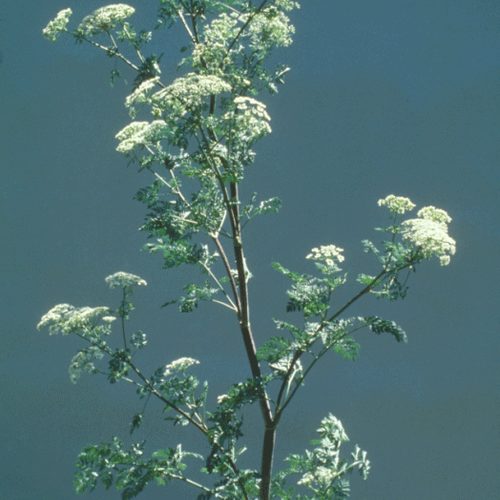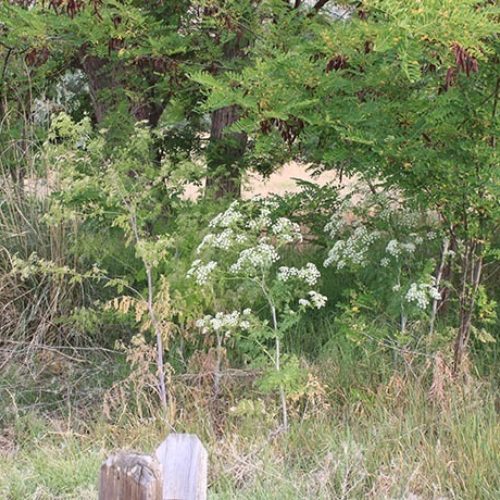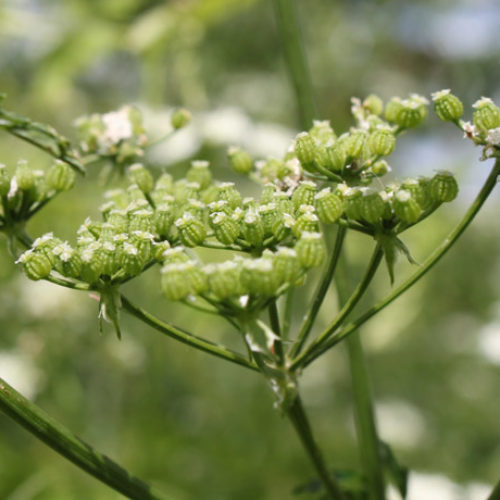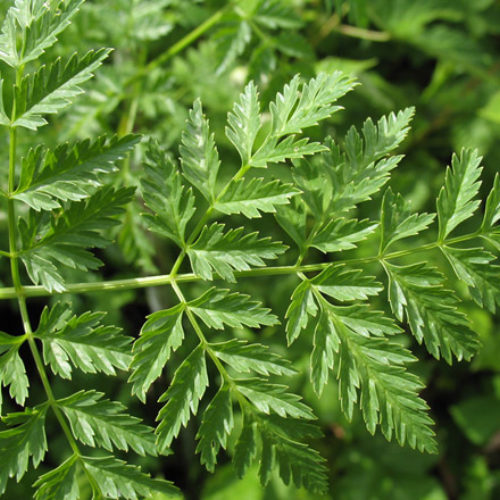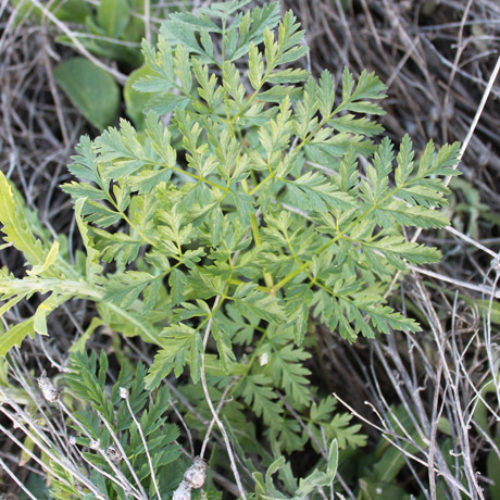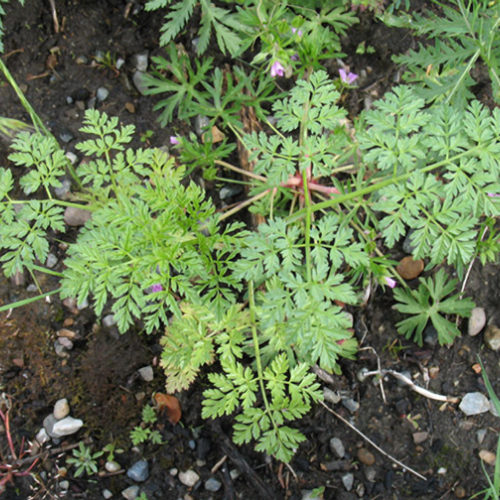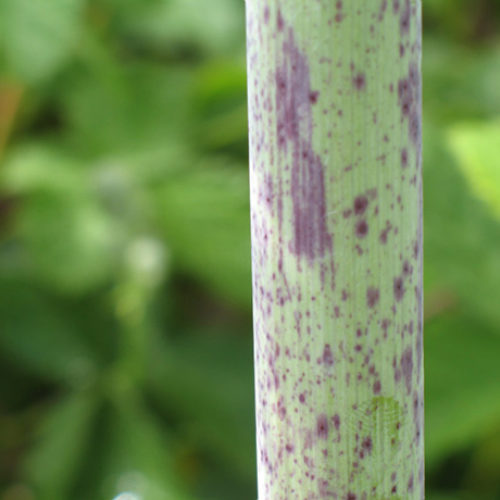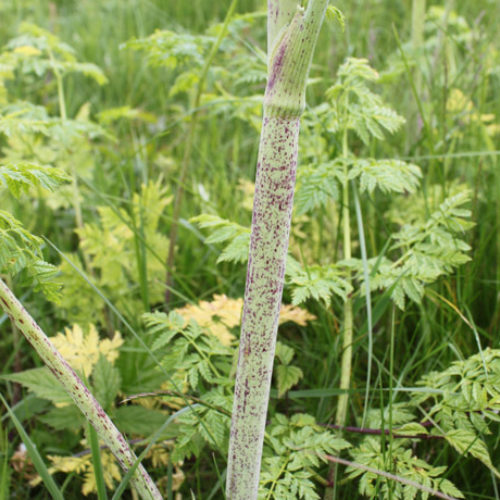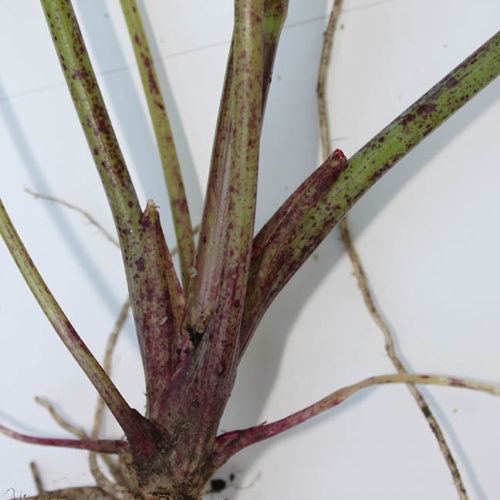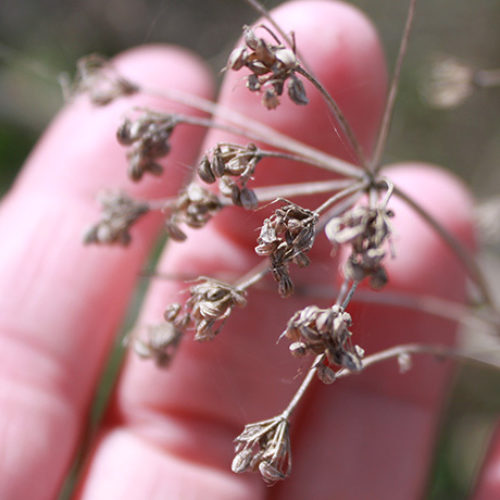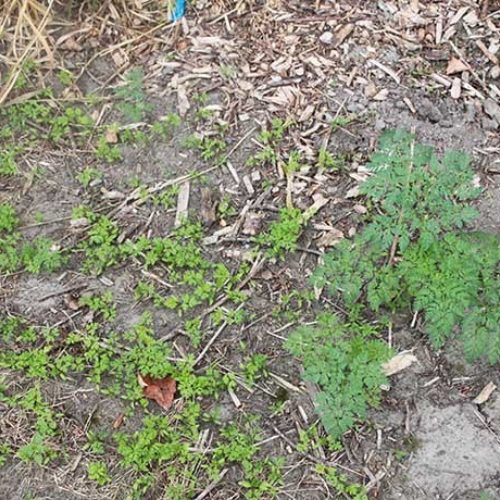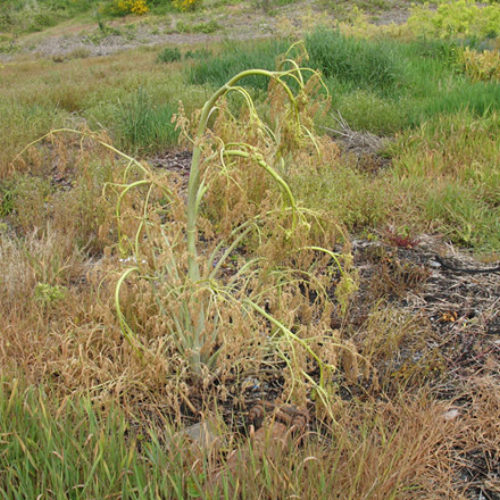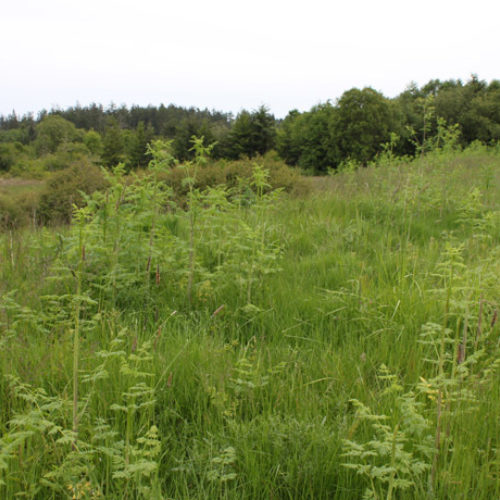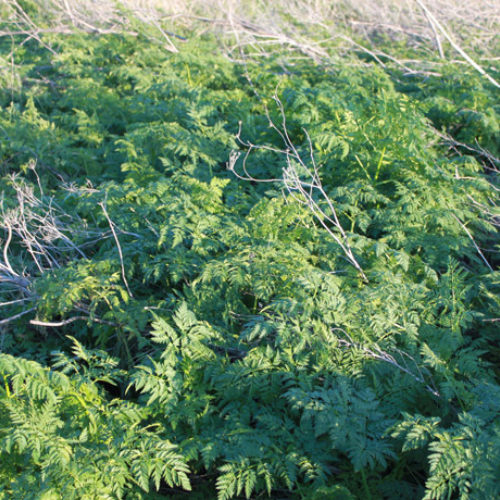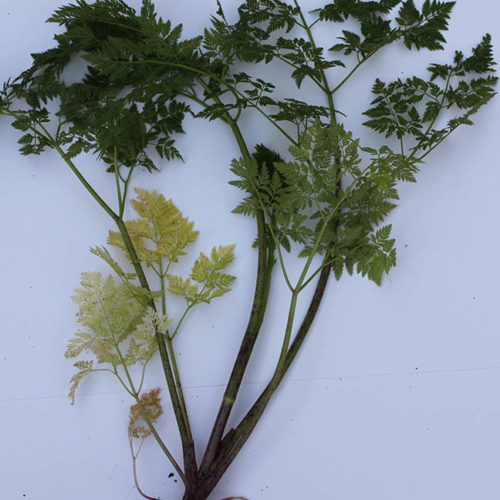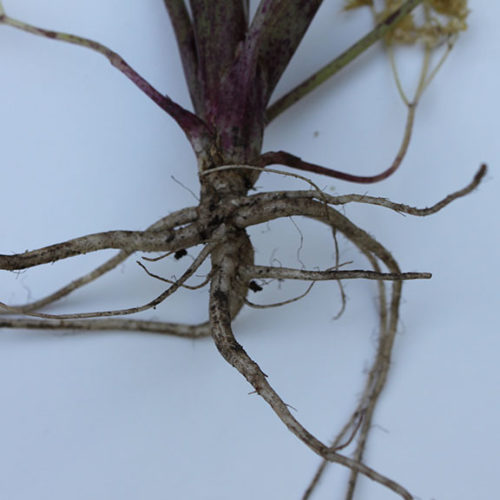Poison Hemlock
Conium maculatum
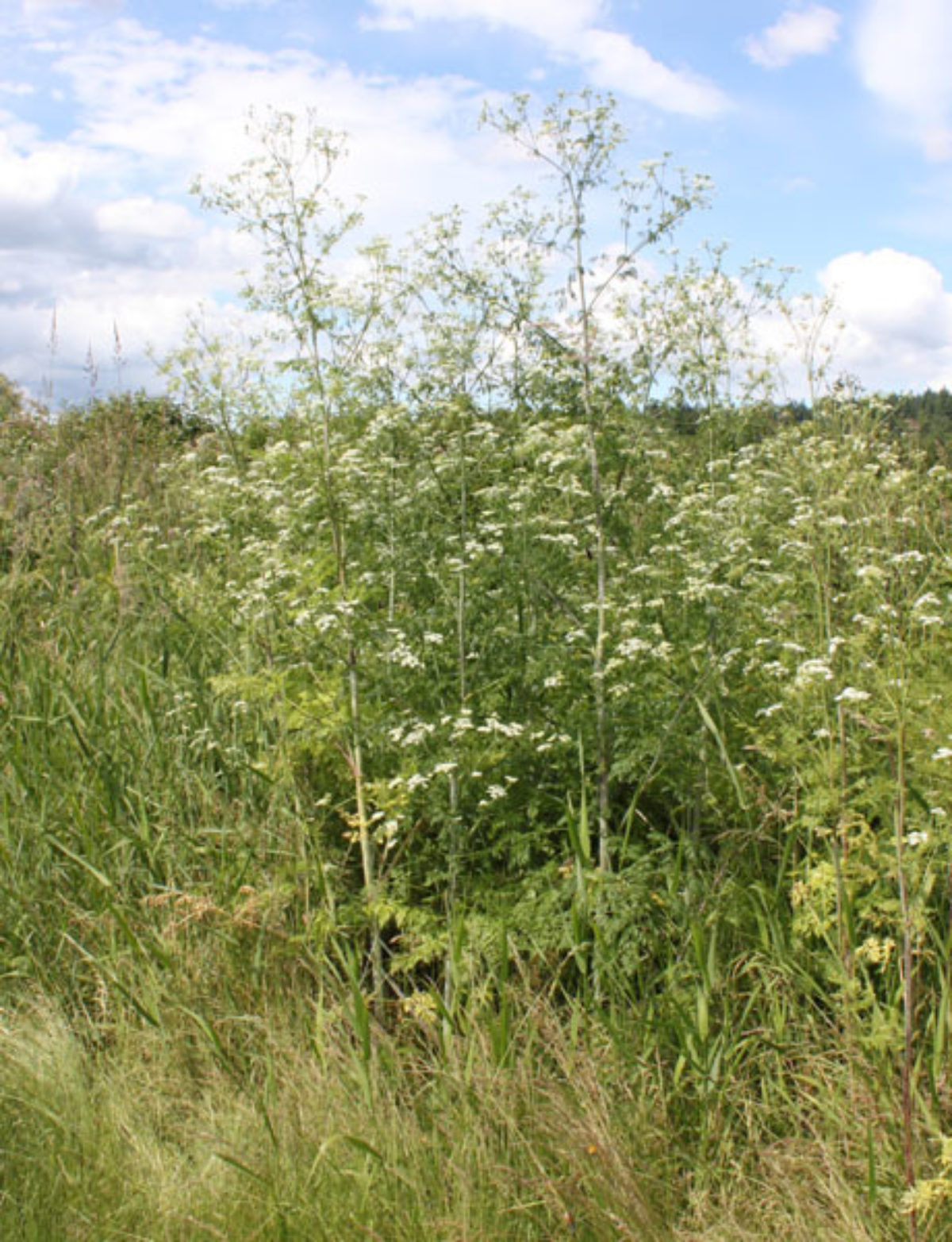
Family: Apiaceae
Other Common Names: carrot-fern, fool's-parsley, spotted hemlock
Weed class: B
Year Listed: 1988
Native to: Europe, Asia and Northern Africa
Is this Weed Toxic?:
humans, livestock
Legal listings:
This plant is also on the Washington State quarantine list. It is prohibited to transport, buy, sell, offer for sale, or distribute plants or plant parts of quarantined species into or within the state of Washington or to sell, offer for sale, or distribute seed packets of seed, flower seed blends, or wildflower mixes of quarantined species into or within the state of Washington. Please see WAC 16-752 for more information on the quarantine list. For questions about the quarantine list, contact the Washington State Department of Agriculture's Plant Services Program at (360) 902-1874 or email PlantServices@agr.wa.gov.
Why Is It a Noxious Weed?
The entire plant is toxic to animals and humans, containing the poisonous alkaloid coniine and other alkaloids. Poison hemlock can quickly infest large areas of pasture as well as open waste places.
How would I identify it?
General Description
Poison hemlock is a very tall biennial plant that can grow up to 12 feet in height. It grows into a rosette the first year--a cluster of leaves growing on the ground and then flowering stems the next year.
Flower Description
Flower are small and white and occur in 4 to 8 inch umbrella shaped clusters.
Leaf description
Leaves are fern-like, toothed, finely divided and have a strong odor when crushed.
Stem description
Stems are hollow, hairless and have noticeable purple blotches.
Fruit Seed Description
Seed hairless, egg-shaped and about 0.09 inches (2 mm) long with prominent ridges.
May Be Confused With
Other plants in the Apiaceae (carrot/parsley) family when young. From a distance, wild carrot (Daucus carota), a Class C noxious weed, may be confused with poison hemlock, although wild carrot is smaller, hairy, and doesn’t have purple blotches on the stems.
Where does it grow?
Poison hemlock prefers rich, moist soil, but is highly adaptable to other conditions. Please click here to see a county level distribution map of poison hemlock in Washington.
How Does it Reproduce?
Poison hemlock reproduces by seed.
How Do I Control It?
General Control Strategy
Always wear gloves and protective clothing if working with poison hemlock as all parts of this plant are toxic. Do not burn plants due to the toxins within plant parts. Also, due to the plants toxicity, do not allow animals to graze live or dead poison hemlock plants.
Mechanical Control
Digging up small infestations and removing the entire taproot is effective. Mowing is ineffective as plants will re-sprout, sending up new stalks in the same season mowing occurs. Toxins will remain potent in dried plant material. Never put pulled plants in the compost or leave them where children or livestock might eat them. Removed pulled plants from site, bag and put in the trash. Monitor sites for resprouts and seedlings as seeds will readily germinate on disturbed ground.
BIOLOGICAL CONTROL
There are no approved biological control agents for poison hemlock. See the WSU Integrated Weed Control Project for further information.
Herbicide Control
Always read and follow the label instructions before applying any herbicide product. The best time to spray poison hemlock is in the spring, when the plant is still young and the leaves are just a basal rosette, before it forms a stem and flowers. Please refer to the PNW Weed Management Handbook, or contact your county noxious weed coordinator.
For More Information
See our brochure on poison hemlock.
See our brochure in Spanish on poison hemlock.
See our postcard for early detection information about poison hemlock.
See our press release for more information about poison hemlock (Conium maculatum).
See our Written Findings for more information about poison hemlock (Conium maculatum).
Clallam County NWCB Fact Sheet on poison hemlock
Pierce County NWCB Fact Sheet on poison hemlock
Lincoln County NWCB Fact Sheet on poison hemlock
Island County NWCB Fact Sheet on poison hemlock
King County NWCB Fact Sheet on poison hemlock
King County NWCB Fact Sheet on poison hemlock in Spanish
Thurston County NWCB Fact Sheet on poison hemlock
Whatcom County NWCB Fact Sheet on poison hemlock
Jefferson County NWCB Fact Sheeton poison hemlock
Cowlitz County NWCB Fact Sheet on poison hemlock
Mason County NWCB Fact Sheet on poison hemlock
Control Options for poison hemlock from Whatcom County NWCB
WTU image page on poison hemlock



